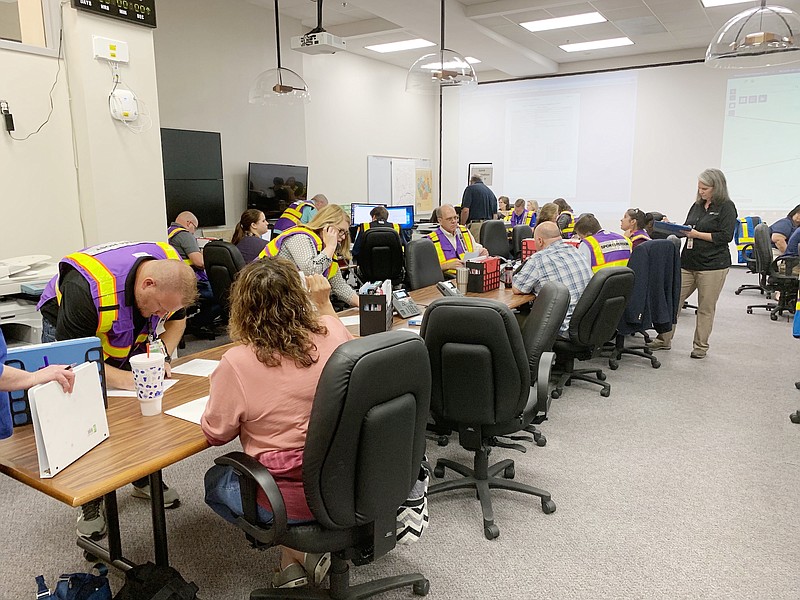In the unlikely event that leaked radiation ever barrels straight towards Fulton, Tuesday's exercise showed that officials have a plan.
The exercise was held to evaluate state and local responses to a simulated emergency at the Callaway Energy Center. There were 13 different agencies that participated in the exercise in the State Emergency Operations Center at MO SEMA.
Representatives from the Federal Emergency Management Agency and the Nuclear Regulation Commission oversaw the drill as a part of a required biannual evaluation of nuclear power plants and their emergency response procedures. The Callaway Energy Center, operated by Ameren, conducts two drills annually to ensure their readiness.
"I think we did a really good job coordinating with the state and counties to make sure our recommendations for the health and the safety of the public were properly communicated," said Mark McLachlan, senior director of plant support at the Callaway Energy Center.
Tuesday's simulated emergency was an equipment failure at the Callaway Energy Center resulting in a radiation containment failure that affected the surrounding areas. This scenario was classified as a general emergency, the most severe classification.
McLachlan said drill scenarios at the nuclear reactor can include emergency situations such as earthquakes, tornados and hostile actions against the facility.
"Our number one priority when working at the nuclear plant is to protect the public," said Anne Roselius, manager of nuclear communications at the Callaway Energy Center who is also a resident of Fulton. "These are our families and neighbors living around our power plant."
Local EMA officials and county commissioners participated in the drill from the surrounding counties of Osage, Gasconade, Montgomery and Callaway. These four counties intersect within the Callaway Energy Center's 10-mile emergency planning zone.
"(The drill) went great for us," said Michelle Kidwell, Callaway County emergency management director. "It was apparent every position in our (Emergency Operations Center) knew their roles and responsibilities very well."
There were 13 different agencies that participated in Tuesday's exercise in the State Emergency Operations Center at MO SEMA. During the drill, a number of mock news releases were distributed and simulated news rumors were discussed as the various agencies fulfilled their duties.
During the exercise, Ameren's McLachlan and MO SEMA's Jeff Briggs fielded simulated media questions. Various MO SEMA employees stood in as mock reporters during the news conference as reporters have not been given access to drills in the past.
"It's nice to have a real reporter out to take some of the pressure off of these guys," joked Bryan Daniels, a communications executive for Ameren.
During the mock news conference, Briggs and McLachlan gave updates on simulated evacuations in the emergency planning zone and the response at the Callaway Energy Center. Briggs explained the four local MO SEMA reception centers, which evacuees would be directed to during a real emergency, are located in Jefferson City, Columbia, Hermann and Montgomery City.
The NRC will grade the exercise in the coming months but will provide preliminary findings at a news conference at the MO SEMA headquarters Thursday morning. While there were certain areas of the exercise McLachlan felt could be improved upon, he was overall satisfied with Ameren's performance and was hopeful to receive a positive grade from the NRC.
"Overall, I thought our team and the state coordinated very well and I feel we would have protected the health and safety of the public had this been a real event," McLachlan said.

